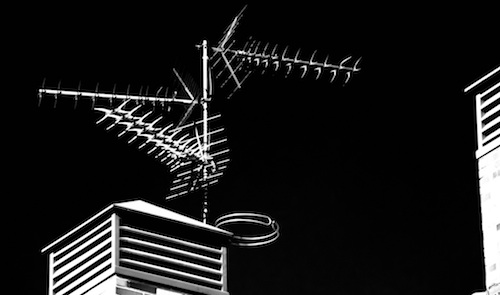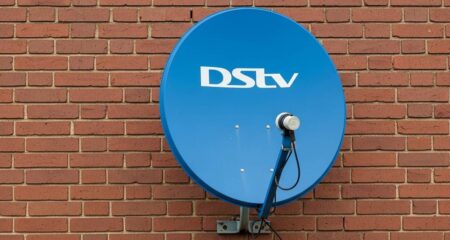
Worldwide, the broadcasting industry is being turned on its head by the Internet. It’s no different locally, where technological advances — online and otherwise — are taking place at an unprecedented pace and leaving a wave of uncertainty in their wake. But it’s all about opportunity, not catastrophe.
Broadcasters, like most media, should have two audiences uppermost in their minds: consumers and advertisers. It’s a model that’s sustained them for decades and will probably do so in future — if they continue to get the balance right.
It’s something they are achieving with increasing difficulty. And therein lies the rub. To use the sometimes overly direct parlance of broadcast commerce: “We want eyes and ears. And their money.” It’s increasingly difficult to achieve, given the number of parameters that are being brought into play, propelled essentially by the Internet.
With the advances that new technology brings in distributing broadcast programme content come some hurdles, not least of which is how to deal with getting paid for it. While the law is pretty much watertight in terms of protecting copyright and remuneration internationally via traditional terrestrial broadcasts and legal protocols, they’re not so easily applied online. And that’s something broadcasters will have to grapple with.
Says Ian Melamed, principal consultant at Shaya eSecurity: “Technology has not changed the law. However, its application by the sheer volumes of content involved has affected the ability of authorities to implement it. Historically, broadcast was in the hands of the few — increasingly it is in the hands of the many.”
The rise of YouTube
Nothing illustrates this more effectively than the rise of YouTube, now owned by Google. Take the stats: YouTube gets 2bn views a day — more than double the prime-time audience of the three major American TV networks combined. Last year more than 13m hours of video were uploaded to the site and 35 hours of video are uploaded every minute. Put another way, more video is uploaded to YouTube in 60 days than the three major American networks have created in 60 years. The site reached over 700bn playbacks in 2010.
While the bulk of video content is generated by users, some broadcast networks make content available through a partnership programme.
It’s exciting but challenging times for SA’s broadcast industry as it comes to terms with increased competition, a new digital television broadcast standard and a growing Internet audience for its services.
Many broadcasters are starting to put their toes in the water in early preparation for a time when online, on-demand broadcasting will go mainstream. Analysts put that at between five and seven years from now when data networks will be fast enough and cheap enough to carry high-definition video and audio content directly to homes via cable instead of traditional terrestrial over-the-air broadcast.
Already TV sets are being sold with wired and wireless network connections for streaming services like YouTube. So while they’re optimised for broadcasts delivered via satellite and regular antennae, they’re pointing the way for another content delivery mechanism: the phone line.
Online broadcast model in the works
Says Justin Spratt, CEO of digital marketing agency Quirk: “The broadcast revenue model is changing — it has to in the online world. No one is yet certain how this hybrid model will ultimately look but it does offer some compelling advantages for consumers and advertisers.
“For advertisers there’s the ability to better target audiences online where they are better defined. Financial people have a better idea of how their budgets are being used. For consumers there’s the ability to watch or listen to programming whenever and wherever they want — they decide, guided in some form by broadcasters.”
Prenesh Padayachee, chief technology officer at Internet Solutions, says the seeds of an online broadcast model are being sown right now. “Mainstream adoption is still five to seven years away for a few reasons,” he says.
“In SA there is about a 7% Internet penetration in the country’s population. People’s ability to get online is an issue in a model where advertising revenue is a large contributor. Bandwidth is problematic too — it’s expensive, limited and necessary in order to deliver high-definition content. In regions like the US and Europe where there are cable connections to homes, delivering bandwidth-intensive content is easier and in Japan and Korea there are high-speed fibreoptic connections straight into homes. That’s simply not the case here.”
There are about 7,5m TV sets in use in SA. They will be rendered virtually useless within two years without set-top boxes — R500 decoders needed to accept free-to-air digital broadcasts.
Migrating from analogue to digital
In January, SA committed itself to migration from the current analogue broadcasting system to a digital standard, called DVB-T2, which allows broadcasters to deliver more content by using spectrum more effectively. There will be a period of “dual illumination” whereby analogue and digital signals will be broadcast simultaneously, but the digital switchover is scheduled for December 2013.
Lara Kantor, group executive of regulatory strategy at e.tv, says the channel plans to switch on its commercial digital offering in April next year. “Pay TV is already on a digital platform and from next year public broadcasters will follow suit,” she says. “Additional free channels will become available in standard definition although the decoders are HD-ready. Because it’s such a robust system, coverage and reception will be improved, especially indoors.”
Kantor says there’s a lot of buzz around Internet-connected TVs in Europe but it’s a long way off locally.
Subscription service DStv is pushing the envelope in delivering content via new channels. Last year it introduced its mobile TV decoder, the Drifta, which receives DVB-H signals and converts them to Wi-Fi for viewing on portable devices such as smartphones, computers and tablets. Programming is limited to a few channels and the device has to be in DVB-H coverage areas but it is the first significant move for TV into the mobile arena and the company plans to broaden its programming on the platform.
The company also has an on-demand service for premium subscribers whereby they can download shows and movies via the Internet and play them back offline on a PC, using a player delivered as a software download.
It’s taken nearly 40 years for television in SA to transform itself from the original analogue world into the digital age. Further change will be revolutionary rather than evolutionary. The online business model for broadcast still has to prove itself, but there’s no doubt that it’s gaining momentum. — Greg Gordon, Mail & Guardian
- Image: Andres Rueda
- Visit the Mail & Guardian Online, the smart news source
- Subscribe to our free daily newsletter
- Follow us on Twitter or on Facebook




